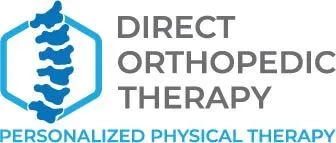Shoulder Pain in Jacksonville Beach

What Is Shoulder Pain?
Your shoulder is capable of amazing feats; however, with amazing feats also sometimes comes amazing discomfort. Your shoulder joint is called a ball-and-socket joint because the head of the humerus (upper arm bone) naturally fits into a corresponding space within the scapula (shoulder blade.) A layer of cartilage keeps the bone ends from rubbing together, and sacs called bursae keep nearby tendons from rubbing painfully against the bones. The tendons attach the bones to a set of muscles called the rotator cuff. When something goes wrong with the intricate mechanical interplay among these structures, pain is sure to result.
Shoulder pain can vary, depending on its cause. In some forms of tendon impingement, for instance, you feel pain as you raise your arm up, only to stop feeling the pain before the arm stretches completely skyward. A degenerated shoulder joint may ache annoyingly every time you move it in any direction. An acute injury can cause sharp, intense pain that makes it impossible for you to move your shoulder at all.
What Causes Shoulder Pain?
The complexities of the shoulder joint present many opportunities for pain-causing conditions. WebMD cites some of the more common causes of shoulder pain as:
Arthritis — Osteoarthritis occurs when the cartilage in the shoulder joint wears out, a common age-related issue. Rheumatoid arthritis causes pain when the immune system decides to attack membranes surrounding the shoulder joint.
Tendonitis — Overuse of the shoulder joint (often related to the demands of a job or favorite sport) can cause the tendons to suffer from ongoing inflammation. The swelling can then create painful impingement when you raise your arm.
Bursitis — Sometimes, the friction from neighboring tendons can cause the bursae to experience inflammation, making overhead motions painful.
Dislocation — When the head of the humerus pops out of its place, the shoulder is said to be dislocated. This is an enormously painful injury, and one which you may be more vulnerable to after the first incidence.
Frozen shoulder — The medical term for frozen shoulder, according to the Mayo Clinic, is adhesive capsulitis. If your arm has been in a cast or sling for a long time, or you were bedridden and had no opportunity to exercise your shoulder, the tissues may have stiffened up on you.
How Physical Therapy in Jacksonville Beach Helps
Don’t assume that you have to gulp down painkillers or schedule surgery to fight shoulder pain. Physical therapy can treat many of the conditions responsible for this complaint in a safe, non-invasive manner. Your physical therapist can pinpoint the cause of your pain through a variety of diagnostic techniques. X-rays can reveal signs of arthritis or dislocation. Range-of-motion tests and discussion of your symptoms can tell us exactly which soft tissue may be involved in your pain.
Once we know why your shoulder hurts, we can recommend the correct mix of physical therapy methods to help manage or even completely relieve that pain. Exercises can be very helpful for easing both the pain of osteoarthritis and the stiffness of frozen shoulder. Bursitis responds well to techniques ranging from heat and ice applications to changes in your workplace ergonomics or athletic training routine. Strengthening exercises can rehabilitate injured muscles and stabilize a shoulder prone to dislocation.
many of the conditions responsible for this complaint in a safe, non-invasive manner. Your physical therapist can pinpoint the cause of your pain through a variety of diagnostic techniques. X-rays can reveal signs of arthritis or dislocation. Range-of-motion tests and discussion of your symptoms can tell us exactly which soft tissue may be involved in your pain.
Once we know why your shoulder hurts, we can recommend the correct mix of physical therapy methods to help manage or even completely relieve that pain. Exercises can be very helpful for easing both the pain of osteoarthritis and the stiffness of frozen shoulder. Bursitis responds well to techniques ranging from heat and ice applications to changes in your workplace ergonomics or athletic training routine. Strengthening exercises can rehabilitate injured muscles and stabilize a shoulder prone to dislocation.

Life Is Too Short To Bother With Shoulder Pain
Your physical therapist will start the process of dealing with your shoulder pain by evaluating it. You’ll be asked questions about the cause of the pain, how severe it is, what makes it worse and whether anything makes it feel better. The physical therapist will conduct some tests to determine the range of motion in your shoulder and test its strength.
Depending on the cause of your shoulder pain, your physical therapist will begin a recommended course of treatment to improve your range of motion and start the healing process. This can involve pain management, such as identifying painful motions or activities and figuring out ways to avoid those. Your treatment will likely involve manual therapy, such as soft tissue massage, as well as range-of-motion exercises to help improve the function of your shoulder muscles and ligaments. Strengthening exercises may or may not be a part of your treatment, depending on the diagnosis. It’s important that you follow your physical therapist’s advice, so you can properly heal.
If you’re suffering from shoulder pain as a result of an injury, contact us today to schedule an appointment with a physical therapist. We’ll get you back on the path to healing as quickly as possible!


